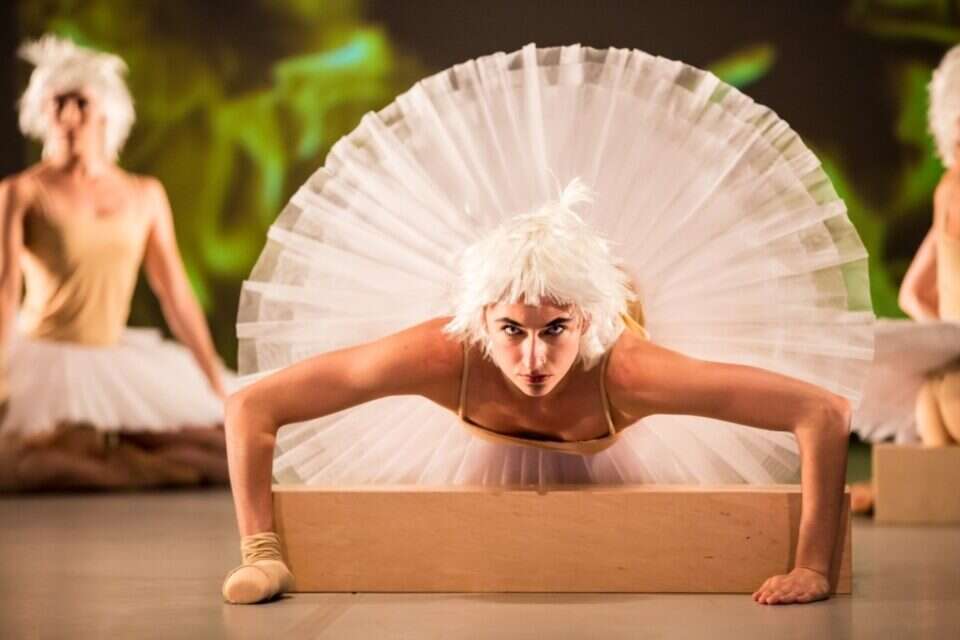I have a weakness for Swan Lake, really.
I know the choreography for Boria, and there's no way my ear won't recognize Tchaikovsky's music for this ballet after two bars.
Sometimes when I want to clear my head I watch Odette and Siegfried's fae-de-de in the second act.
There is no performance that I do not know.
exaggerated?
Can be.
Something about the gentleness, vulnerability and heavenly spirit that surrounds this passage pierces my heart.
On the other hand, in shows whose movement language is not classical ballet, my level of excitement is different.
I don't always understand, I don't always connect and sometimes I leave shows feeling like I wasted my time.
The reason I'm telling you all this is to try and illustrate the place from which I approached to watch the "Swan Lakes".
Idit Souslik published in this section at the beginning of the week her review for it, the title of which was "The show 'Swan Lakes' returns to the peak of classical ballet and examines how relevant it is today."
I admit, I was a little afraid of what I was going to see.
How can you take this iconic piece, mediate it in the movement language of 2022, and create a whole that will meet the expectations that arise only from the name of the show.
A free and colorful celebration.
From the work of Freed Schechter, photo: JeanetteBa
Yesterday (Thursday) was the first performance (there is also tomorrow).
Four works by four choreographers - against the four movements of the ballet - created an exciting and fascinating mix.
The virtuosity of the dancers of the Gauthier Dance Company from Stuttgart was extraordinary, and she managed to mediate the ideas of the choreographers in an inspiring way.
No one remained indifferent to the capabilities of the human body that were presented there.
In today's spectacles there are countless ways to criticize the classical ballet and what it represents: it is often restrained to the point of being inhumane, gender-wise the women are always required to present long and perfect lines while the men's role is to serve as a porter that carries them from place to place.
Also in terms of content, the prima ballerina is the one that the man will have to save someday and without him she will probably die of a broken heart.
Did someone say #MeToo?
With the help of the curatorial work of the director of the group Eric Gauthier, the reference to all of these was evident.
Everything was there.
With the choreographer Keitano Soto, the tension between the elegant and the wild that simulated the transformation that the prima ballerina goes through between woman and animal was nothing less than spectacular;
For Marie Schweinard, it was the sharp criticism of gender relations mediated with a lot of anger in an inspiring way;
Marco Geka shone with an instinctive and passionate movement language;
And Freed Schechter, the Israeli star (who also wrote the music), managed to get the swans out of the lake and put them into a colorful celebration (and very Israeli, as my friend Leary said), which would not embarrass the deserter.
Animal elegance.
From the work of Keitano Soto,
Between the first part and the second, agile technical work was required to change the design of the stage.
The screen went down, and suddenly a guy appeared who grabbed the microphone.
It was Gauthier.
For a few minutes he chose to share with the audience the thought behind the evening he created, in something that ranges from an explanation to a stand-up show.
You don't see that every day either, and although you can criticize and say that art doesn't need to be explained in explicit words, there was something very connecting, pleasant and accessible about it.
If "Swan Lakes" wanted to test the relevance of the classical masterpiece, it seems that he proved that when the new is built on the old - the whole becomes greater than the sum of its parts.
Against the background of Hegel's philosophical thought - thesis, anti-thesis and synthesis - it was evident that when the past is a point of reference, and not just a source of blame and disqualification, the social value that can be derived from the move is tens of times greater.
A burst of passion and creativity.
From the work of Marco Geca, photo: JeanetteBa
"Swan Lakes" proved that besides the heavenly and sublime beauty there are different and equally spectacular forms of expression for the beauty that the human body knows how to present.
And no, it is not obvious when it comes to the world of dance, which usually requires its people to highlight very certain abilities.
When the audience stood up and cheered at the end of the four works, someone in the hall shouted "Don't go, they will come back".
And the truth?
We wouldn't mind sailing through a few more lakes, which proved to all of us that anyone can be a swan.
were we wrong
We will fix it!
If you found an error in the article, we would appreciate it if you shared it with us

